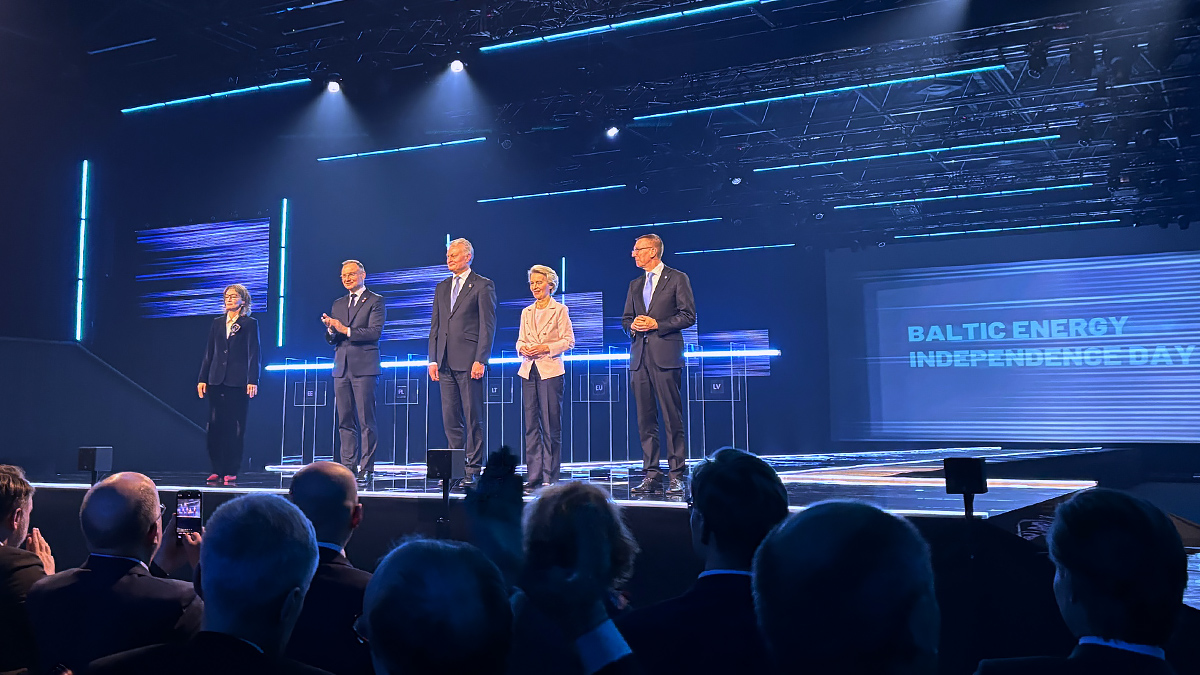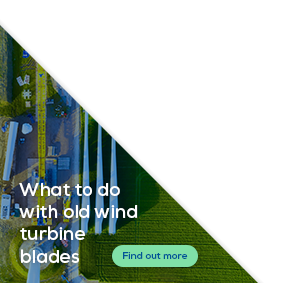News
Power shift: How the Baltic Synchronisation strengthens Europe’s energy security

10 February 2025
Estonia, Latvia and Lithuania are celebrating the successful synchronisation of their electricity grids with Europe’s Continental European Network (CEN). At yesterday’s “Energy Independence Day of the Baltic States” the three Baltic States broke with a legacy of their Soviet past, the synchronisation of their electricity grids with Russia and Belarus. Connecting their electricity grids with the EU will strengthen their geopolitical position and boost their long-term energy security and competitiveness.
“Energy Independence Day” took place on Sunday evening, in Vilnius. Estonia, Latvia and Lithuania celebrated the successful synchronisation of their electricity grids with Europe’s Continental European Network (CEN).
The event was attended by European Commission President Ursula von der Leyen, the Heads of State and Government of Estonia, Latvia, Lithuania and Poland and other high-level representatives.
In parallel Estonia, Latvia and Lithuania disconnected their electricity grids from the the Russian-controlled BRELL energy system. This guarantees more energy independence for the three Baltic States, reduces their reliance on Russian electricity imports and reinforces (energy) security in the wider region.
“It’s a historic moment, when the last three EU Member States disconnect their electricity networks from the Russian and Belarusian system, where the electricity frequency was centrally controlled by Moscow. It’s a regional triumph born of 18 years of collaboration and a common European vision. Thanks to this truly European project, the three Baltic States gain full control of their own electricity networks and strengthen the energy security of the Eastern Baltic Sea region and the EU as a whole”, says WindEurope Deputy CEO Malgosia Bartosik, who attended the event.
The European Commission, along with the Governments of Estonia, Latvia, Lithuania, and Poland, have been instrumental in accelerating this megaproject. The synchronisation initiative has received substantial support from the EU’s Connecting Europe Facility (CEF) – over €1.2 billion in grants since 2014.
An even greater role for wind energy
Estonia, Latvia and Lithuania are transitioning to renewables at unprecedented speed. In 2018 they got over 60% of their electricity from fossil fuels. Now, less than a decade later, they get 72% of it from renewables. Wind generates 28% of all electricity they consume. With the desynchronisation from Russia wind energy will play an even greater role in the countries’ energy systems going forward.
The three countries are all running auctions – for onshore and offshore wind. They want to keep up momentum here, with simple CfD auctions as recommended by the EU.
And they are working on innovative solutions too. Estonia is installing new radar which minimises distortions from wind farms. It extends the area where wind farms can be built from 10% of the country to over 60%. Latvia has fast-tracked environmental permits for its first 400 MW of onshore wind and is planning other projects in its state-owned forests. Lithuania is looking at new ways to electrify industry with electricity from wind.
“Estonia, Latvia and Lithuania are models for how renewables enhance energy security and competitiveness. The enthusiasm and determination of their Governments and stakeholders involved in wind is stunning”, said Malgosia Bartosik after the event.
The power of electricity interconnectors
A key component of the synchronisation process is the ‘Harmony Link Interconnector,’ a crucial energy infrastructure project between Lithuania and Poland. This interconnector will not only facilitate the integration of the Baltic States into the European grid. It will also enhance capacity for renewable energy transmission.
The Baltic States are further connected to the European electricity network via electricity lines between Poland and Lithuania (LitPol Link, commissioned in 2015), Lithuania and Sweden (NordBalt, commissioned in 2015) and Estonia and Finland (Estlink 1 and Estlink 2, commissioned in 2006 and 2014 respectively).
The three countries are investing in additional interconnectors between themselves and with their neighbours around the Baltic Sea. All of this will help to optimise electricity flows, reduce power prices and ensure stable supply.
In the future especially, offshore wind farms built in the Baltic Sea will deliver clean electricity to industries and households in Central and Eastern Europe. This will help to deliver the EU’s larger renewables and energy security targets.

